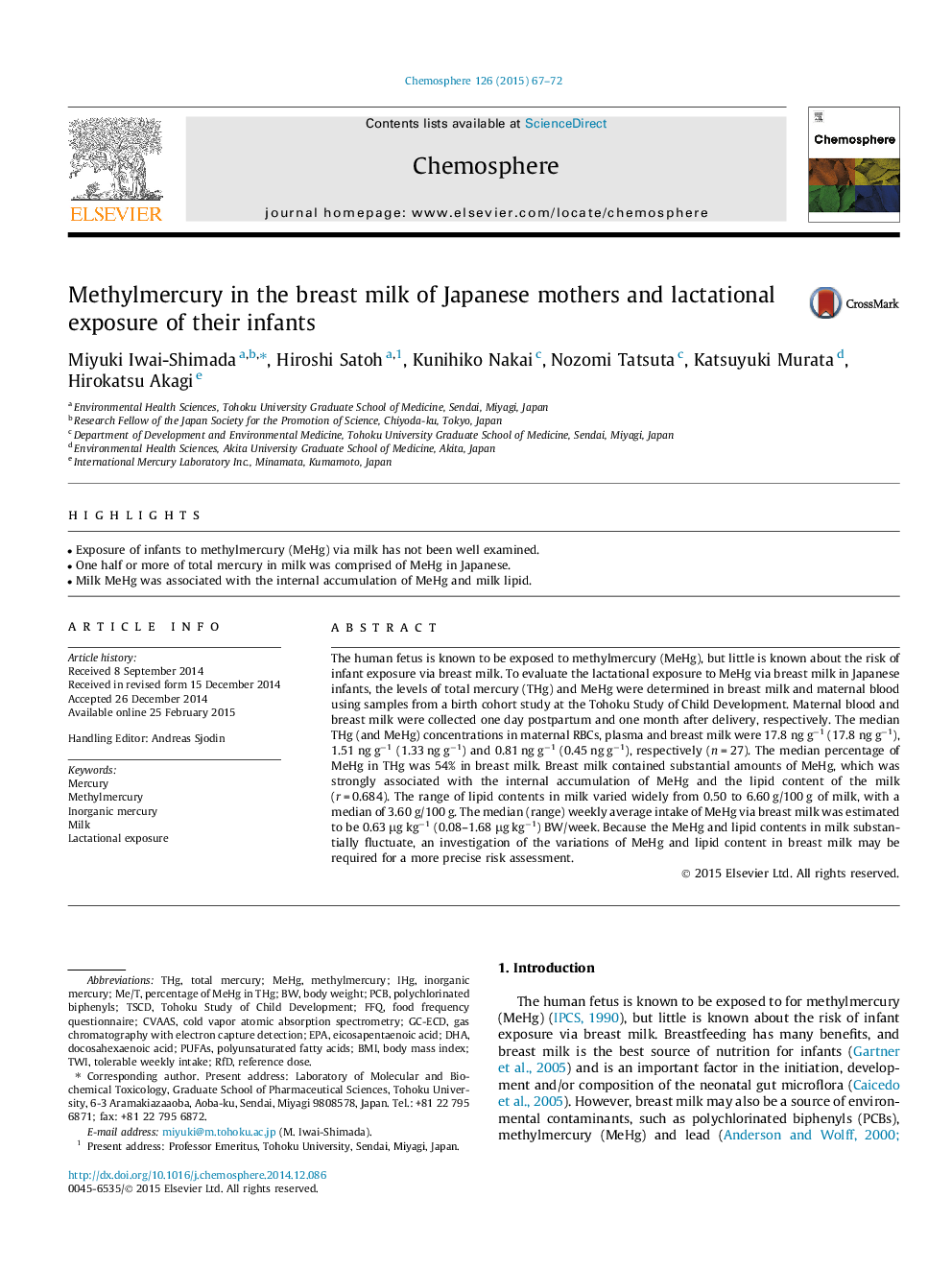| Article ID | Journal | Published Year | Pages | File Type |
|---|---|---|---|---|
| 4408419 | Chemosphere | 2015 | 6 Pages |
•Exposure of infants to methylmercury (MeHg) via milk has not been well examined.•One half or more of total mercury in milk was comprised of MeHg in Japanese.•Milk MeHg was associated with the internal accumulation of MeHg and milk lipid.
The human fetus is known to be exposed to methylmercury (MeHg), but little is known about the risk of infant exposure via breast milk. To evaluate the lactational exposure to MeHg via breast milk in Japanese infants, the levels of total mercury (THg) and MeHg were determined in breast milk and maternal blood using samples from a birth cohort study at the Tohoku Study of Child Development. Maternal blood and breast milk were collected one day postpartum and one month after delivery, respectively. The median THg (and MeHg) concentrations in maternal RBCs, plasma and breast milk were 17.8 ng g−1 (17.8 ng g−1), 1.51 ng g−1 (1.33 ng g−1) and 0.81 ng g−1 (0.45 ng g−1), respectively (n = 27). The median percentage of MeHg in THg was 54% in breast milk. Breast milk contained substantial amounts of MeHg, which was strongly associated with the internal accumulation of MeHg and the lipid content of the milk (r = 0.684). The range of lipid contents in milk varied widely from 0.50 to 6.60 g/100 g of milk, with a median of 3.60 g/100 g. The median (range) weekly average intake of MeHg via breast milk was estimated to be 0.63 μg kg−1 (0.08–1.68 μg kg−1) BW/week. Because the MeHg and lipid contents in milk substantially fluctuate, an investigation of the variations of MeHg and lipid content in breast milk may be required for a more precise risk assessment.
